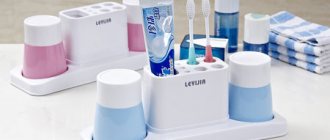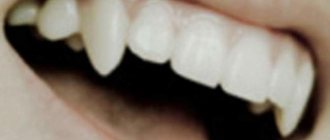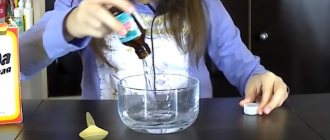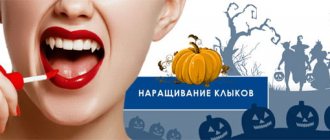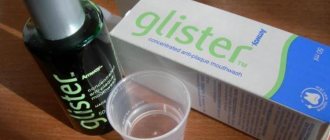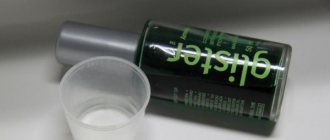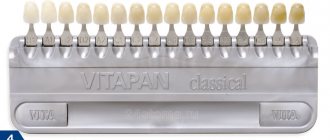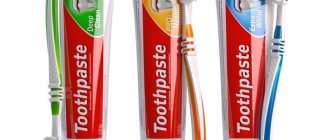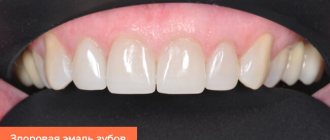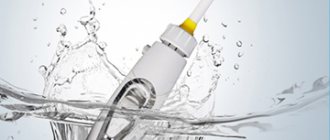Mouthwash can be found in almost any store, but it is not so easy to find one that consists of natural ingredients “without chemicals”! In this article we will talk about how to make your own mouthwash from scrap materials! With fluoride levels rising, it's no surprise that more people are choosing to make their own mouthwash and natural toothpaste. They are very easy to make! You can do it in minutes by simply adding a few drops of essential oils to a few servings of mineral water. Below you will find all the information you need for some teeth cleaning options that are very effective. In an emergency; you can chew fresh parsley to freshen your breath.
How to do
Place rosemary and water in a saucepan and bring to a boil. Let simmer for 15 minutes, remove from heat and leave to cool. Strain into a clean, sterile bottle and store in your bathroom, ready to use.
Advice
Another quick and easy homemade mouthwash can be made by infusing cleansing herbs such as peppermint, marjoram, sage and thyme. For more information, check out how to make herbal infusions
Four benefits of DIY mouthwashes
According to advertising, mouthwash can kill up to 99 percent of bacteria in the mouth. And here the question arises, is it really necessary to get rid of all bacteria?
You need to take care of your teeth every day, first of all, in order to get rid of dangerous bacteria that cause caries. Sterile cleanliness is just as dangerous. The oral cavity is home to not only harmful but also beneficial bacteria.
In addition, the store-bought version contains a number of harmful substances, such as fluoride or artificial colors and flavors.
One of the most advertised and sold through advertising liquids, Listerine, was invented more than a hundred years ago (1881) by Joseph Lawrence as a means for cleaning floors and disinfecting operating rooms. Then they began to use it against dandruff and as an aftershave lotion. It became a mouthwash only a few years ago.
Many doctors point to a link between the use of store-bought liquids and the rise in oral cancer cases.
The liquid, which you can make with your own hands, is significantly superior in both composition and quality.
First of all, it's inexpensive. The cost of a homemade mouthwash will be a fraction of the cost of a store-bought one.
Does not contain any chemicals. Manufacturers often include:
- Dyes;
- Preservatives;
- Artificial sweeteners
and other chemicals that are harmful.
With your own, you always know what you added and for how long you can use it. And it doesn’t need to be stored for a long time.
They do not contain alcohol, although adding is not prohibited. Alcohol dries out the oral mucosa and causes bad breath.
You control the quality of the ingredients yourself. You can't do anything bad for yourself!
Natural homemade recipes for brushing teeth
Natural toothpaste and homemade teeth cleaning recipes are very easy to make, and it's worth taking the time, even if it's just a few weeks, to give your body a break from fluoride. Although fluoride is very good for our teeth, strengthening them and helping to protect them from decay, it also has adverse effects on the nervous system. With increasing levels of fluoride being added to our drinking water and toothpastes, it is no surprise that more and more people are now choosing to make their own dental cleaners. Below are two tooth cleaning options that I often use to brush my teeth at home, and they are just as effective as the toothpaste I buy at the store.
Terms of use
One of the disadvantages of homemade mouthwash is that it does not last long. This pharmaceutical product can stand on the shelf for months: homemade decoctions can last in the refrigerator for a maximum
a week, and more often - just a couple of days. Therefore, stocks must be replenished regularly.
Mouth rinsing time is up to two minutes, and most products can only be used by adults. It is best to consult a doctor before giving mouthwash to your child. It is better to dilute children's portions with water in larger proportions than for adults.
Do not swallow mouthwash under any circumstances. In addition, it is worth remembering: it is not a complete alternative to toothbrushing; oral care must be comprehensive.
Ingredients
- 1 teaspoon fine sea salt
- 1 teaspoon dried sage
- 1 tablespoon Arrowroot
- 1/2 teaspoon sodium bicarbonate
- 10 drops peppermint essential oil
- 5 drops Tea tree essential oil
Using a pestle and mortar. If you don't have a pestle and mortar, you can get the same result with a simple glass and bowl. Mix all dry ingredients, add essential oils and transfer them to a sterile jar or pot before storing in the bathroom.
For cleaning the washing machine
Shutterstock
You can use Listerine type rinse liquid to disinfect the washing machine itself.
Allow the washing machine to fill with water, add one cup of rinse aid, and run a full cycle. Your washing machine will eventually be completely free of germs. see also
16 Ways to Use Candles You Probably Didn't Know About
To combat foot fungus
william casey/Shutterstock
A mouth disinfectant successfully “treats” not only the head, but also the legs. If you suffer from foot fungus, mix equal parts warm water, white vinegar and Listerine in a basin or bathtub. Make sure there is enough water to completely submerge your feet. Sit in this solution for 45-60 minutes to be sure to kill any bacteria. After this procedure, your feet will become soft and exude a fresh aroma.
Composition of homemade mouth rinses
Besides being easy to make, homemade mouthwash has a much wider variety of ingredients that can be used.
Herbs
- Aloe vera gel. Aloe vera extracts have antibacterial and antifungal effects;
- Anise. A flowering plant with flavors reminiscent of licorice, dill and tarragon. Contains anethole, which has powerful antimicrobial properties against bacteria, yeast and fungi;
- Basil. An herb with a strong sweet odor. Scientific research has shown that basil oil has powerful antioxidant, anticancer, antiviral and antimicrobial effects;
- Cardamom. With a unique taste, resinous aroma. Used to treat infections of teeth and gums, prevent and treat throat diseases. Decongestant;
- Cinnamon. A spice obtained from the bark of the cinnamon tree. Suppresses the growth of bacteria, protects food from spoilage. Cinnamon is high in antioxidants. The essential oil also has antimicrobial properties;
- Carnation. Clove oil can reduce toothache. Reduces the development of infections in teeth due to antiseptic properties. The buds have antioxidant properties;
- Coriander. When crushed, the seeds emit a lemon-citrus aroma. Described as nutty, warm, spicy and orange flavored. Research has shown that the leaves and seeds contain antioxidants. But the leaves have a stronger effect.
- Eucalyptus. Eucalyptus oil is used for cleaning and deodorizing. Found in cough drops, toothpaste and decongestants. Has an antibacterial effect;
- Fennel. A very aromatic herb with culinary and medicinal uses. Contains anethole, which has an antimicrobial effect against bacteria, yeast and fungi;
- Ginger. With antibacterial effect. Stimulates saliva production;
- Goldenseal. Improves the healing of mouth ulcers;
- Marjoram. A relative of oregano, oregano. With a sweet pine and citrus taste;
- Myrrh. Used as an antiseptic in mouthwashes and toothpastes. Helps prevent gum disease. Myrrh essential oil has powerful preservative properties;
- Oregano. Leaves and flowering stems have an antiseptic and expectorant effect. High in antioxidants and antimicrobial properties;
- Peppermint. Contains menthol. Used for brewing tea, flavoring ice cream, confectionery, chewing gum and toothpaste;
- Rosemary. Contains a number of potentially bioactive compounds, including antioxidants such as carnosic and rosmarinic acid;
- Sage. With a slight spicy taste. Used as an antibiotic, antifungal, astringent;
- Thyme. Essential oil of common thyme contains 20-54% thymol. Timol is an antiseptic. The main ingredient in the liquid is Listerine. Also an active ingredient in some natural alcohol-free hand sanitizers.
- Turmeric. Antimicrobial, anti-inflammatory and antiseptic agent.
Essential oils
- Bergamot. The fruit is the size of an orange, yellow in color, similar to lemon, and has a pleasant aroma. Relieves inflammation. Has antiseptic properties;
- Lemon. The acid of lemons deodorizes, removes grease, whitens stains, and disinfects;
- Mandarin. In traditional Chinese medicine, the peel of the fruit is used to regulate qi energy, treat bloating, improve digestion and reduce phlegm;
- Tea tree. Known to be antiseptic, antibacterial, antifungal and antiviral.
DIY Mouthwash with Essential Oils
Sweeteners
- Honey. Some people like the sweet taste of the mouthwash. Honey contains more complex carbohydrates than sugar, which break down more slowly and are less likely to cause problems in the mouth;
- Stevia. About 30 times sweeter than sugar. Studies have shown that stevia inhibits the growth and reproduction of harmful bacteria that cause gum disease and tooth decay;
- Xylitol. Sweetener. Bacteria cannot feed on xylitol, so it does not cause tooth decay or bad breath.
Other components
- Apple vinegar. Gargling with apple cider vinegar is a common remedy for sore throats due to its antibacterial properties. Helps dissolve calcified deposits in the mouth. Sometimes added to mouthwash;
- Baking soda. Acts as a mechanical cleanser for teeth and gums, neutralizes acid production in the mouth. An antiseptic that helps prevent infections. A paste made from sodium bicarbonate and 3% hydrogen peroxide solution can be used as an alternative to commercial toothpastes;
- Calcium carbonate. used as an abrasive instead of fluoride to remineralize teeth;
- Glycerol. Sweet tasting moisturizer. Thickener, solvent, sweetener, preservative and 60% sweeter than sucrose. Although it has about the same nutritional energy as table sugar, it does not raise blood sugar levels. Does not serve as a breeding ground for bacteria;
- Gum arabic. Gum, acacia resin. Reduces surface tension of liquids. Serves as an emulsifier. Lowering surface tension allows fluid to more easily penetrate hard-to-reach places, such as between teeth;
- Hydrogen peroxide. Disinfectant, antiseptic, oxidizer and bleach. Can be used as a toothpaste when mixed with baking soda and salt. Should be stored in an opaque container as it degrades quickly when exposed to light.
- Salt. It is sodium chloride and acts as a preservative by absorbing water. Used in soaps, detergents and cooking. Acts as a preservative because it absorbs water from bacteria, killing them or at least inhibiting their growth;
- Vodka. Used in some recipes, although not recommended due to the presence of alcohol;
- Water. The main component of the liquid. You can experiment using boiled, mineral, carbonated or distilled water.
To remove a bruise
Vladeep/Shutterstock
If you accidentally bump somewhere and feel that you will get a bruise, then mouthwash will help prevent it. Soak a cloth with an alcohol-based mouthwash and apply it to the affected area. Listerine will prevent you from getting a big bruise after bumping into your nightstand or bed in the middle of the night (or otherwise getting it).
What's in commercial mouth rinses?
It is worth living in harmony with nature, taking care of yourself, your loved ones and the environment. We noticed that many mouthwashes that we buy have such an intense smell or taste that they cause irritation to the mucous membranes.
Such liquids contain carcinogenic dyes and various acids that destroy tooth enamel. It's hard to believe that a delicate hygiene product can contain harmful substances. However, this is true.
While rinsing your mouth, you may accidentally swallow. And the oral mucosa absorbs liquid. As a result, toxic substances enter the bloodstream and are distributed throughout the body.
Here are commonly found ingredients in commercial products.
- Alcohol. Dries out the mouth and may cause an unpleasant odor as a result;
- Chlorhexidine. An antiseptic component that constricts blood vessels and, as a result, causes cardiovascular diseases, including increased blood pressure;
- Hexetidine. A substance with antibacterial and bactericidal properties that can lead to neurological disorders;
- Parabens. Increase the risk of endocrine disorders, allergies and immunotoxicity;
- PEG (polyethylene glycol) and PPG (polypropylene glycol). The toxic gas ethylene oxide is used in production. Additionally, these components may also be contaminated with dioxane or contain poisonous gas particles, which will ultimately cause DNA damage;
- Methyl salicylate. Ingredient that causes severe poisoning;
- SLS and SLES. Substances that may be contaminated with carcinogenic dioxane with mutagenic properties.
It's no surprise that the number of oral cancer cases is increasing every year. Moreover, recent research shows that these powerful antiseptics kill both harmful and beneficial bacteria found in the mouth.
Researchers at Harvard University have linked these antibacterial treatments to an increase in diabetes cases.
Forest balm rinse for gums composition instructions for use
To remove odor from the trash can
Elly/Shutterstock
Don't let your trash can create an unpleasant odor in your home while it sits waiting for the trash to be taken out and thrown away. To prevent bad odor, you can use a small amount of mouthwash. Apply a small amount to a cotton pad or paper towel and throw in with the rest of the trash. As a result, there will be no unpleasant odor in the place where the garbage is located.
